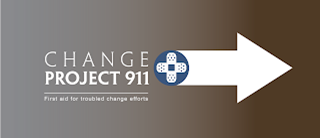Mat Roosa, LCSW-R
NIATx Coach
“It’s easy to quit drinking. I’ve done it a thousand times.” W.C. Fields
Change is easy. Sustaining change is not so easy. This is true for personal changes like quitting smoking, exercising more, driving slower, or keeping the house more organized. It is also true for workplace systems changes, such as implementing new policies and procedures. Too often, despite our best intention, we end up like Sisyphus, doing our best to roll the change up the hill, only to see it slide back down.
The NIATx rapid-cycle PDSA change model emphasizes making changes that you can measure and implement quickly. Sometimes, change teams think of the process as a quick sprint to change. But sustaining a change (sustainment) is more like a long-distance run. So here are a few things you can do to pace yourself to sustain your change project gains.
Create a sustain plan
Sustainment rarely happens without a clear sustainment plan. Just as inpatient hospital care should include discharge planning at admission, change projects should start sustainment planning at the beginning of the change. Build the sustainment conversation into the change project planning, and use the elements below to ensure sustainment success.
Keep meeting
NIATx change teams meet frequently when developing and implementing a change project. Too often, these teams disband prematurely at the end of the change implementation. Schedule ongoing—but less frequent—change team meetings to monitor the successful change.
Track the data
Many successful change sustainment teams develop a data dashboard for tracking key change metrics. Periodic review of the data helps decision-makers take action when the data reflects a drift from the new practice. Teams can set parameters that will trigger actions: If metric x drops below level Y, we will do Z, etc.
Engage new staff
Staff turnover poses a primary challenge to sustainment. Initial implementors leave, often replaced by staff who have no knowledge or investment in the new practice. Offset this issue and sustain the new practice by building it into your organization’s policy and procedures and new staff training. In addition, learning the history story of successful change projects helps new staff to appreciate the work that has come before them and will motivate them to sustain the improvements.
Assign a Sustain Leader
A key role in the NIATx model is the Change Leader. Teams are also encouraged to assign a data coordinator, who gathers and presents the change project data. The Sustain Leader plays another key role for Change Teams. Assigning a Sustain Leader responsible for creating a sustainment plan is the clearest path to making sustaining the change a priority for your team.
Focus on ROI
Change teams feel frustrated when they see the progress of a successful change project fading—or worse, reverting to the old way. Backsliding leaves the team right back where they started, with little to show for their efforts. Instead, motivate teams to sustain successful gains by celebrating progress. Announcing the successful change and honoring the change team's effort in an office newsletter or other communication can also motivate the team to sustain the improvement.
Recognize the challenge of turning the new into the norm
Most people and teams are better at starting new things than they are at sustaining new things. Humans evolved to notice risk and make rapid decisions to increase safety. Appreciating this innate wiring can help us feel greater empathy for ourselves and our team members as we work to monitor changes and enhance sustainment.
Using the strategies above can help you to succeed in turning new changes into norms of practice. However, continuous quality improvement is not just about the implementation of change. CQI also requires an ongoing effort to sustain the changes you have already made.
About Change Project 911
Change Project 911 is a monthly blog post series covering common change project barriers and how to address them. Has your change project hit a snag that you’re not sure to tackle? Share your issue in the comments section below, or email Change Project 911 at matroosa@gmail.comWe’ll offer solutions from our team of change project experts!
About our Guest Blogger
Mat Roosa was a founding member of NIATx and has been a NIATx coach for a wide range of projects. He works as a consultant in quality improvement, organizational development and planning, and implementing evidence-based practices. His experience includes direct clinical practice in mental health and substance use services, teaching at the undergraduate and graduate levels, and human service agency administration. You can reach Mat (Change Project SOS) at matroosa@gmail.com.




No comments:
Post a Comment